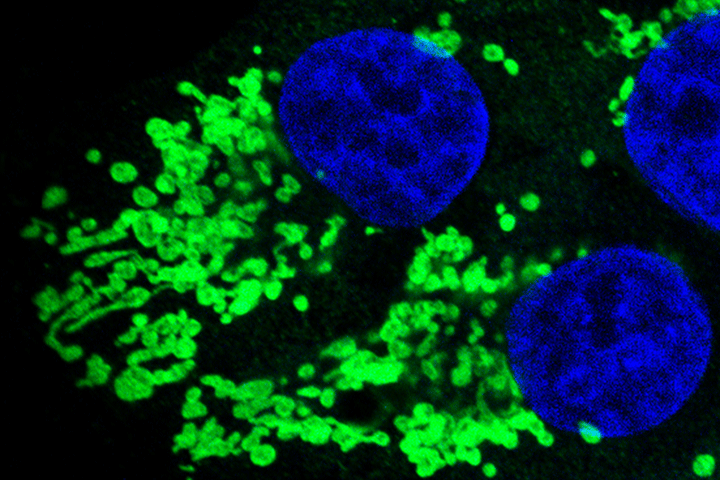New Study Targets Specific BRAF Mutation

Significant research conducted in the past two decades has spurred a revolution in understanding the basic biology of cancer.
Often, this knowledge translates into direct benefit for patients in the form of precision, or personalized, medicine—treatments based on the molecular profile of an individual’s tumor. The molecular profile can then identify DNA and protein changes that control how cancer cells grow, divide, and spread. As researchers have learned more about these changes, they are testing new treatments to target these alterations and potentially stop or slow down cancer’s spread.
Honing in on the V600E Mutation
In pancreatic cancer, researchers are studying several alterations, among them the BRAF mutation. BRAF is a gene found on chromosome 7 that encodes a protein also called BRAF. This protein plays a role in cell growth by sending signals inside the cell, promoting, among other functions, cell division. When BRAF is mutated, cells get signals to keep dividing, with no instructions on when to stop. Scientists have identified many different types of BRAF mutations. One of the most common is the BRAF V600E mutation, which can be found in several cancer types including melanoma, colorectal cancer, and others.
BRAF mutations can also be found in about 2.2 percent of pancreatic cancer patients. In patients with this alteration in the BRAF gene, V600E mutations are the most common, according to patient advocacy organization Pancreatic Cancer Advocacy Network (PanCAN).
“KRAS is the most frequent mutation in pancreatic cancer, but it’s also an alteration that is elusive in terms of targeting,” explains gastrointestinal oncologist Michael Pishvaian, M.D., Ph.D. Pishvaian is leading a pancreatic cancer study at Johns Hopkins Sidney Kimmel Comprehensive Cancer Center targeting V600E. “But BRAF is absolutely targetable. And there are drugs that are approved [for BRAF mutations] that have shown very promising benefits in other types of cancer,” he explains.
He emphasizes that although two percent of pancreatic cancer patients with V600E mutations may seem like a small number, that percentage is actually in range of or even slightly higher than the number of patients with microsatellite instability molecular alterations (known as high microsatellite instability or defective DNA mismatch repair). Patients with defective DNA mismatch repair now have access to pembrolizumab (Keytruda) when tumors cannot be removed surgically.
“What we’re doing is chipping away at these targets,” says Pishvaian, director of Gastrointestinal, Developmental Therapeutics and Clinical Research Programs for the Kimmel Cancer Center in the Greater Washington, D.C., region. “In some cases, doctors may not be aware of BRAF-mutated pancreas cancer. But these inhibitors can really be of direct benefit to patients and we know these patients are out there. What we need is the data.”
About the Study
This multisite phase II trial uses a combination treatment approach with binimetinib and encorafenib for pancreatic cancer patients with BRAF V600E mutations that are not inherited.
Binimetinib is in a class of medications called kinase inhibitors. It works by blocking the action of the abnormal protein that signals cancer cells to multiply. It is an inhibitor of mitogen-activated protein kinase (MEK), or more specifically, a MAP2K inhibitor. MEK is part of the RAS pathway, which is involved in cell proliferation and survival. Encorafenib is a small molecule BRAF inhibitor that targets key enzymes in the MAPK signaling pathway. This MAPK pathway alteration occurs in many different cancers, including melanoma and colorectal cancers.
In the United States, the combination of encorafenib and binimetinib is approved for the treatment of unresectable or metastatic melanoma with a BRAF V600E or V600K mutation as detected by an FDA-approved test. Encorafenib is also approved for use in combination with cetuximab for pretreated patients with metastatic colorectal cancer with a BRAF V600E mutation, as detected by an FDA-approved test.
The primary objective of the pancreatic cancer trial is to determine whether this combination will be effective in patients with metastatic pancreatic cancer who carry the same BRAF V600E mutation. Researchers will also be looking at median progression-free survival, median overall survival, duration and time to response, as well as safety and tolerability.
“Pancreatic cancer patients need better treatments,” Pishvaian says. “With targeted therapy, we are delivering what is typically less toxic therapy to a more specific subgroup of patients with pancreatic cancer. And we would expect to see a higher likelihood of showing a beneficial response to therapy. Targeting V600E could be a step in the right direction for this subgroup of patients.”





